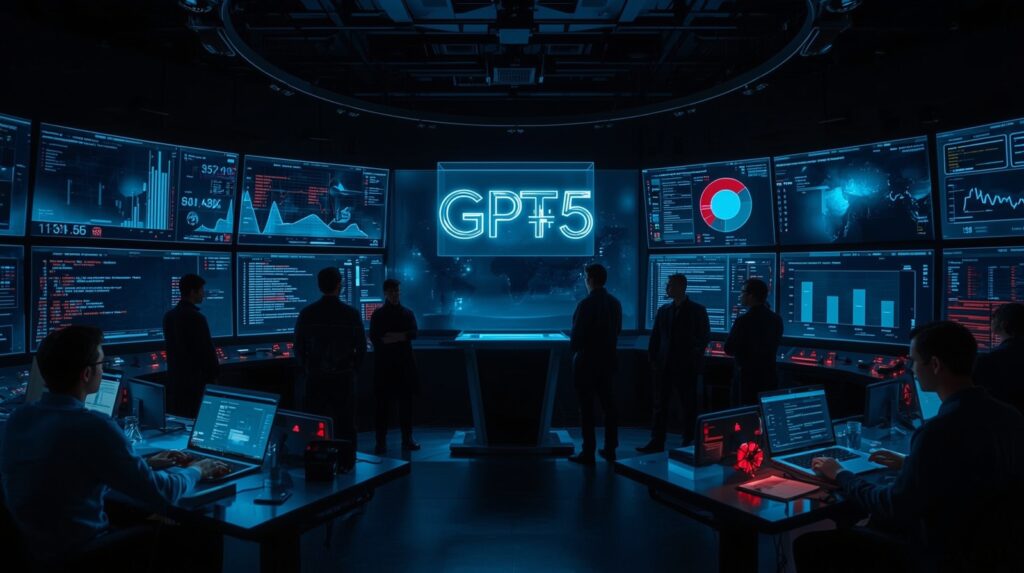
AI CERTS
3 months ago
OpenAI Prepares GPT-5 Launch in August
The GPT-5 Launch is almost here, and the AI world is holding its breath. Slated for release in August 2025, OpenAI GPT-5 is already generating enormous curiosity and speculation across the tech community. As the successor to GPT-4, this next-gen AI model promises even greater intelligence, reasoning ability, multimodal capabilities, and more human-like interaction.
Whether you're a developer, content creator, business leader, or everyday user, understanding what GPT-5 brings to the table will help you stay ahead in this rapidly evolving landscape. In this blog, we’ll explore everything you need to know about the GPT-5 launch, including its release date, anticipated features, and how it compares to its predecessors.

OpenAI’s Journey So Far
Before diving into GPT-5 features, let’s quickly reflect on how far OpenAI has come.
- GPT-2 gave us a glimpse into coherent text generation.
- GPT-3 revolutionized AI writing and applications across industries.
- GPT-4 added deeper reasoning, multimodal support (image + text), and improved safety layers.
Now, with the GPT-5 launch, OpenAI is expected to take things several steps further — possibly redefining how we interact with AI language models.
GPT-5 Release Date and Availability
The most anticipated question: When is GPT-5 launching?
According to several reliable sources and hints from OpenAI executives, the GPT-5 release date is set for August 2025. While an exact day hasn't been announced, early access might be given to enterprise partners and developers through OpenAI’s API platform or Microsoft Azure.
Public availability, similar to previous rollouts, will likely follow a phased approach — starting with ChatGPT Plus and Pro users before expanding further.
Key GPT-5 Features (What We Know So Far)
Though OpenAI hasn’t officially disclosed all the capabilities, leaked information and expert predictions suggest several breakthrough GPT-5 features:
1. Longer Context Window
GPT-4 introduced context windows of up to 128k tokens. GPT-5 could go even further, making it capable of processing large documents, entire books, or extended conversations without forgetting earlier parts.
2. Advanced Multimodal Abilities
While GPT-4o already supports voice, vision, and text, GPT-5 is rumored to refine these features dramatically — improving voice assistants, video analysis, and potentially AR/VR applications.
3. Improved Reasoning and Planning
The GPT-5 launch may signal a major upgrade in reasoning, logic, and problem-solving, making the model better suited for tasks like coding, legal analysis, and multi-step instructions.
4. Personalized AI Models
One major evolution could be “memory layers,” allowing GPT-5 to remember user preferences over time, enabling a more customized AI experience.
5. Enhanced Safety & Alignment
OpenAI continues to prioritize safety. The GPT-5 architecture may include better alignment training, reducing hallucinations and inappropriate content in high-stakes use cases.
GPT-5 vs GPT-4: What’s Different?
Understanding the GPT-5 vs GPT-4 comparison is crucial for evaluating whether an upgrade is worth it for you or your business.
| Feature | GPT-4 | GPT-5 (Expected) |
| Token Limit | Up to 128k | Possibly 256k or more |
| Multimodal | Text, image, some audio | Seamless multimodal (voice, video, text) |
| Reasoning | High | Significantly improved |
| Customization | Limited memory | Personalized long-term memory |
| AI Safety | Strong | Stronger with better alignment |
In short, GPT-5 will likely be more powerful, scalable, and responsive across a broader range of applications.
How GPT-5 Will Impact Industries
The future of GPT is not just exciting for AI developers — it has the potential to transform multiple industries:
- Education: Interactive tutoring, adaptive content, and personalized learning paths.
- Healthcare: More accurate medical note summarization, diagnostics, and chatbot triage.
- Customer Service: Hyper-intelligent virtual agents that understand context and emotion.
- Software Development: AI pair programming that writes, tests, and debugs code with fewer errors.
- Marketing & Content Creation: Human-like content, video scripts, ad copy, and storytelling at scale.
The GPT-5 launch will help bring more AI language model capabilities to startups and enterprises alike, pushing the boundaries of what automation can do.
OpenAI Developments and Partnerships
The GPT-5 release date coincides with several other OpenAI developments:
- Deeper integration with Microsoft Copilot in Word, Excel, and Teams.
- Expansion of OpenAI’s API capabilities through Azure cloud.
- Possible launch of AI agents or assistants capable of completing tasks autonomously.
These developments point to OpenAI’s shift from offering just a model to offering complete AI solutions.
Preparing for the GPT-5 Launch
If you’re planning to adopt GPT-5, here’s how to prepare:
- Review your current GPT-4 use cases and identify what GPT-5 could improve.
- Sign up for API waitlists or ChatGPT Pro to get early access.
- Invest in prompt engineering and fine-tuning skills to maximize outcomes.
- Explore multimodal data pipelines if you plan to leverage image/audio capabilities.
The future of GPT is about going beyond conversation — it’s about deep, integrated AI workflows.
Final Thoughts
The GPT-5 launch is not just another AI model release — it represents the next-gen AI model that may define the next phase of human-computer interaction. With powerful features, enhanced safety, and real-world utility, OpenAI GPT-5 could dramatically reshape productivity, creativity, and even decision-making across industries.
As the GPT-5 release date in August approaches, staying informed and ready will help you take full advantage of what this revolutionary AI language model has to offer.
Enroll in our AI+ Foundation certification.
Want to stay ahead in AI?
Explore our in-depth breakdown of Anthropic Dominates AI Coding with Claude Sonnet 3.5



